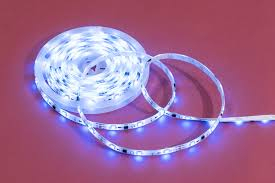Creating a welcoming and comfortable outdoor space can be greatly enhanced with the right pathway lighting. One aspect that is often overlooked is the spacing between pathway lights. How you arrange these lights has a significant impact on the aesthetics of your outdoor decor and the functionality of your lighting.
>>>> see more about https://blls-lighting.com/blog/
Why Pathway Lighting Matters
-
Improved Visibility: Proper pathway light spacing is essential for outdoor spaces. On average, path lights should be placed approximately 10 feet apart. This rule of thumb works well for most scenarios and landscape installations. It helps your guests navigate your garden or yard safely, reducing the risk of accidents or injuries.
-
Enhanced Outdoor Decor: Pathway lighting serves not only functional utility but also enhances the beauty of your home. When strategically placed, smart light fixtures such as LED bulbs can highlight your yard's architectural features and landscape.
-
Safety: Pathway lighting ensures the safety of your guests and family members during nighttime. By strategically placing path lights along steps or near water features, accidents like falls or trips can be greatly reduced.
-
Boost Outdoor Entertainment: Whether it's a barbeque session or a garden party, the right outdoor lighting can elevate the overall mood. Entertainment lighting options like WAC or Cree lighting can make outdoor activities more enjoyable.
-
Energy Efficiency: Today's pathway lighting products, particularly LED lights, are designed with energy efficiency in mind. These lights draw significantly less power, contributing to sustainable living and reducing overall energy consumption.
-
Wide Variety: The market offers various types, styles, and designs of pathway lights, including LED lights, solar lights, and post lights. You can even choose from specialized types like accent lighting, garden pathway lighting, or copper pathway lighting to match your aesthetic or functional requirements.
How Far Apart Should Path Lights Be?
Proper spacing is crucial in pathway lighting. Lighting professionals recommend placing path lights approximately 10 feet apart. However, the strength and spread of your light fixtures can influence this spacing.
Consider the following factors when planning your pathway light spacing:
-
Power Consumption: If lights are too close together, it may increase power consumption. LED lights, known for their energy efficiency, consume less power and have a longer lifespan.
-
Safety: Lights placed too far apart can result in poorly lit paths, posing a safety risk. Ensure your lights are adequately spaced to illuminate the path for safe navigation.
-
Light Spread: The spacing of path lights depends on the spread of your light fixtures. Fixtures with a broad beam of light can be spaced further apart, while those with a narrower beam may need to be closer together.
-
Type of Lighting: The type of lighting you choose can also affect spacing. Landscape lights that accent specific architectural features might need to be closer than general pathway lights.
-
Outdoor Decor: Consider the aesthetic aspects of your outdoor decor during the landscape installation project. Accent lights can enhance landscape features or garden elements. Therefore, the positioning and spacing of these outdoor lights should be planned strategically.
>>>> see more: How to Hang Outdoor String Lights
Frequently Asked Questions
What are the considerations for light intensity in pathway lighting?
Several key considerations exist when selecting the most suitable intensity for pathway lights. These factors can significantly affect the safety, comfort, and aesthetics of your illuminated path, so finding the right balance is crucial.
-
Pathway Light Spacing: Proper spacing ensures even illumination along the entire path, eliminating potential safety hazards caused by shadows or dark spots. Generally, a spacing of 8 to 10 feet is recommended to avoid redundant path lights and maximize efficiency.
-
Type of Lighting: Different types of pathway lights serve various purposes and styles. Choose between accent lighting, deck lights, or decorative path lights to suit your outdoor space's specific needs.
-
Power Consumption: LED bulbs are a popular choice among homeowners for their energy efficiency, softer glow, and lower electricity consumption.
-
Color Temperature: The color temperature of path lights can create different atmospheres. Warmer color temperatures are generally preferred for a cozy ambiance, while cooler temperatures provide better visibility but may feel harsher.
-
Light Fixtures: Consider how the style and size of light fixtures blend with the surroundings and add value to your outdoor decor.
-
Installation: Professionals should handle the pathway lighting installation process to ensure ideal spacing between lights and optimal positioning.
-
Safety: Path lights should provide enough light to illuminate the entire path without creating glare. Solar lights, powered by sunlight, are an excellent choice for preventing dark patches.
-
Maintenance: Some brands offer durable lights with a long lifespan, sparing you the worry of frequent replacements. Solar pathway lights, in particular, are known for their durability and long LED lifespan.
-
Effective Lighting Techniques: Vary lighting techniques based on the width of your pathway. Narrow paths require fewer spaced-out lights, while wider paths with additional landscape features may need larger light fixtures or a more spaced-out pool of lights.
What are the environmental factors of pathway lighting?
There are several environmental factors to consider regarding pathway lighting:
-
Placement: Proper spacing of pathway lights is crucial for efficient lighting and sufficient coverage. Overlapping light from fixtures placed too close together can create an inefficient runway effect.
-
Light Fixtures: The type of lighting used can have environmental implications. LED lighting is more energy-efficient and has a longer lifespan than traditional light bulbs.
-
Color Temperature: The color temperature of pathway lighting affects the atmosphere. A warmer temperature creates a cozy environment, while a cooler temperature provides better visibility.
-
Power Consumption: Consider the power consumption of pathway lights. LED lights consume less power and are more environmentally friendly.
-
Role in Outdoor Decor: Pathway lights contribute to outdoor decor and landscape. Choose lights that enhance aesthetic appeal while providing functional light.
-
Night Light Pollution: Improper installation of path lighting can lead to light pollution, which disrupts the ecosystem and affects nocturnal wildlife.
-
Weather Conditions: Outdoor lights should be weather-resistant as they will be exposed to various weather conditions.
Light Up Your Pathway with Premier Outdoor Lighting
Understanding the optimal spacing for pathway lights is crucial in creating a safe and inviting outdoor environment. Whether you opt for LED lighting for its eco-friendly properties or classic options for timeless elegance, the right pathway lighting spacing can make all the difference.
If you're excited about transforming your yard with premium pathway lighting products, contact us today or schedule an appointment. We will help you plan your next steps and ensure your path is illuminated the right way!
>>>> see more: Edgar M Downs

